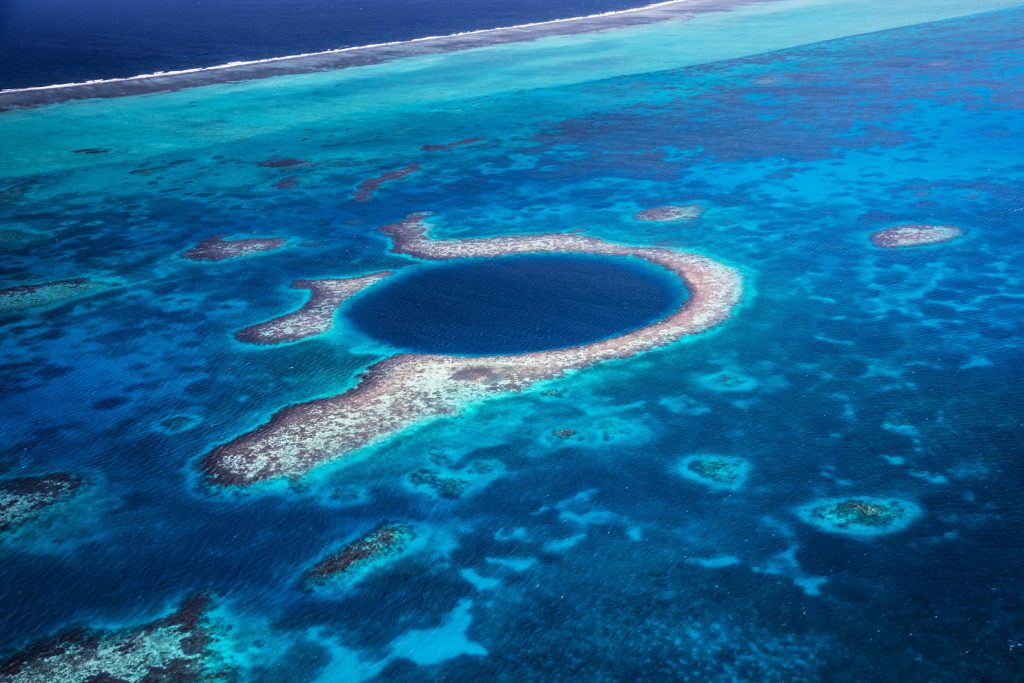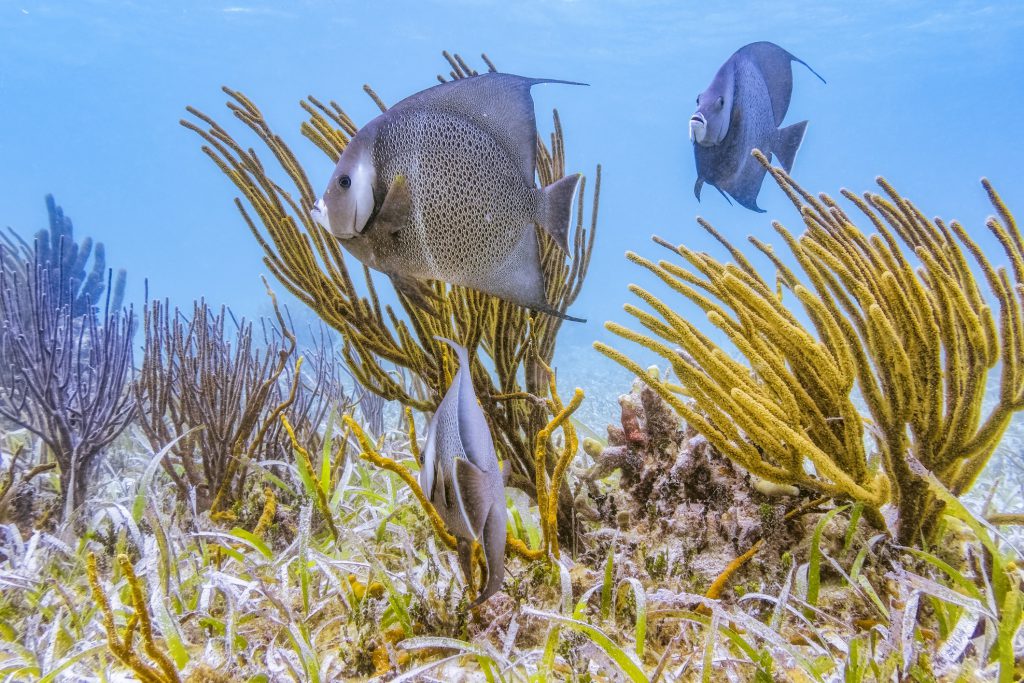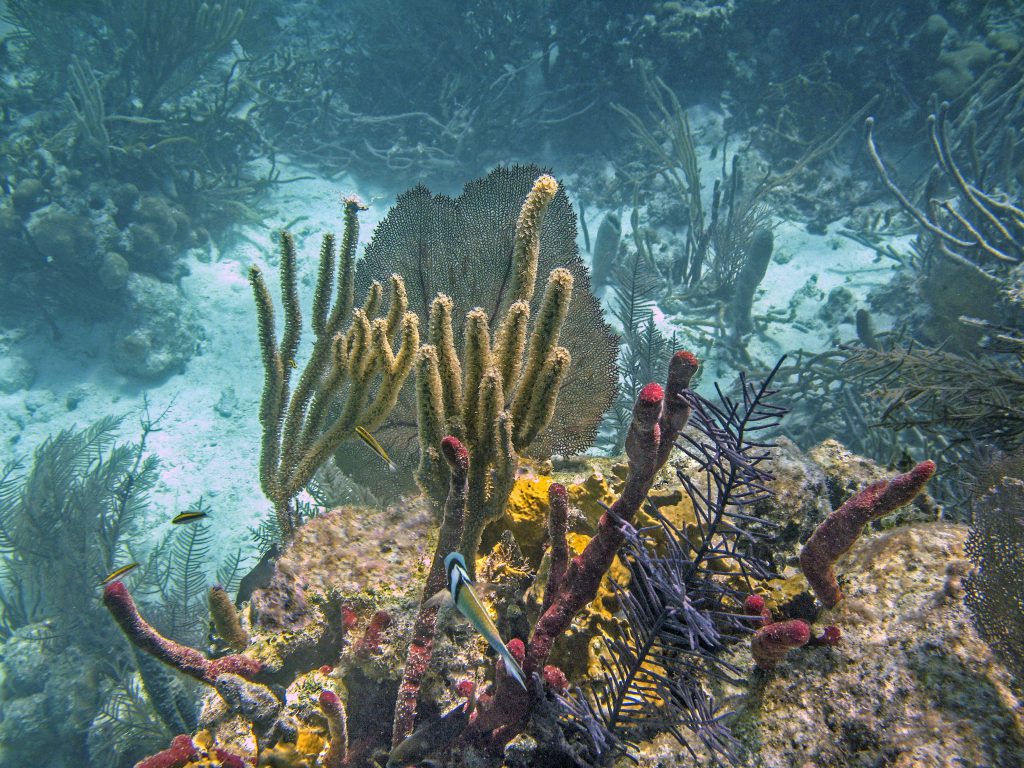Caribbean World Heritage Sites: Belize’s Barrier Reef Reserve System
by Karen Rollins May 2, 2022

“World Heritage is the designation for places on Earth that are of outstanding universal value to humanity… World Heritage sites belong to all the peoples of the world, irrespective of the territory on which they are located.” – WHC website.
The Caribbean is home to 16 cultural and nine natural UNESCO World Heritage Sites spread over 14 territories. These sites speak to the region’s history, culture, development, and outstanding natural beauty.
In this series, Yello is exploring the Caribbean’s World Heritage Sites. Let’s dive down to Belize’s Barrier Reef.
—
Belize’s Barrier Reef Reserve System is the largest reef complex in the Atlantic-Caribbean region and the second largest reef system in the world after Australia’s. It was inscribed as a UNESCO World Heritage Site in 1996.
Comprising of seven marine reserve zones, over 400 cayes and three atolls, it was once referred to “as the most remarkable reef in the West Indies” by naturalist Charles Darwin.
The seven protected marine areas are Blue Hole Natural Monument; Half Moon Caye Natural Monument; South Water Caye Marine Reserve; Bacalar Chico National Park and Marine Reserve; Glover’s Reef Marine Reserve’ Sapodilla Cayes Marine Reserve and Laughing Bird Caye National Park.
These sites are home to around 70 hard coral and 30 six soft coral species along with 1,400 different types of animals, including some under severe threat, such as the West Indian manatee, the American marine crocodile and six types of endangered shark species.
Blue Hole Natural Monument:
The Blue Hole, also known as the Great Blue Hole, is part of the Lighthouse Reef Atoll.
A giant submarine sinkhole that is circular, the Blue Hole measures 1,000 feet across and approximately 400 feet deep and is known as one of the most spectacular diving spots in the world.
Stalactites, rare limestone formations as well as several endangered species of fish are just some of the sights waiting for divers to explore while they descend into the darkness of this massive natural phenomenon.
Half Moon Caye Natural Monument:
Located at the southeast corner of Lighthouse Reef Atoll, this site was the first reserve established in Belize under the National Park Systems Act in 1981 and the first marine protected area in Central America.
The southeastern part of the island is an important sea turtle nesting ground for hundreds of loggerheads, hawksbills, and green turtles who return every year to breed.
The western part of the monument supports what is considered the only viable breeding colony in the western Caribbean for the Red-footed Booby, the smallest of more than half a dozen booby species. The colony can be viewed from an observation platform.
The Half Moon Caye Wall has been described as “6,000 feet of vertical abyss” and is a popular and unique dive site.
South Water Caye Marine Reserve:

South Water Caye is the largest marine reserve in Belize, covering 117,870 acres. The area includes diverse coastal and marine habitats, including sand bores, seagrass beds, rare littoral forests, mangroves, and a range of coral reef types.
The area includes the crown reserve of Man-of-War Caye which is one of only a handful of nesting sites in the Caribbean for the brown booby and frigate bird.
National Geographic named Pelican Beach on South Water Caye one of the top 21 best beaches in the world in 2017.
Bacalar Chico National Park and Marine Reserve:
The Bacalar Chico National Park and Marine Reserve is a largely undeveloped and wild area located in the northern part of the island of Ambergris Caye.
Measuring more than 12,600 acres, the reserve is only accessible to visitors via an hour-long boat ride from San Pedro. The diverse habitat includes grasslands, beaches, swamps, mangroves, forests, and several Maya archeological sites.
The reserve has a wide array of animal life, including endangered pumas and jaguars and is home to almost 200 species of birds as well as Belize’s largest turtle nesting site.
Glover’s Reef Marine Reserve:

Glover’s Reef, named after English pirate brothers John and Rodger Glover in the 1750s, was designated a national protected area in 1993 under the Fisheries Act and was permanently closed to fishing in 2002.
The atoll is 32km long and 12km wide and is considered the best developed biologically in the Caribbean region, with 850 reef types and pinnacles in the lagoon.
Located just 45km miles off the coast of Belize, the reef is a critical nursery and feeding ground for sharks, rays, conch, sea turtles and numerous fish species.
Sapodilla Cayes Marine Reserve:
The Sapodilla Cayes Marine Reserve is located along the southernmost tip of the Belize Barrier Reef.
Extending over 43 square miles and including 14 sand and mangrove cays or low sandy islands, it can be reached in two and a half hours by boat from Punta Gorda.
The reserve is ideal for snorkelers, kayakers and divers because of its shallow coral gardens and its outer reefs regularly attract a variety of fish, including parrotfish, angelfish, and jacks.
Laughing Bird Caye National Park:
The 1.4-acre island of Laughing Bird Caye was declared a National Park in December 1991.
Named after the Laughing Gull bird, which used to breed there, the reserve is regularly visited by day-trip tourists looking for a unique place to snorkel and dive.
The atoll is located just over 17km off the coast from Placencia Village in the Stann Creek District of Belize and is a rare geological structure known as a faro. It is managed by a Placencia based community organisation called ‘Friends of Nature’.
—
If you are hoping to visit Belize soon, take a look at the latest COVID-19 travel protocols on the official Belize Tourism Board website – https://www.travelbelize.org/.








